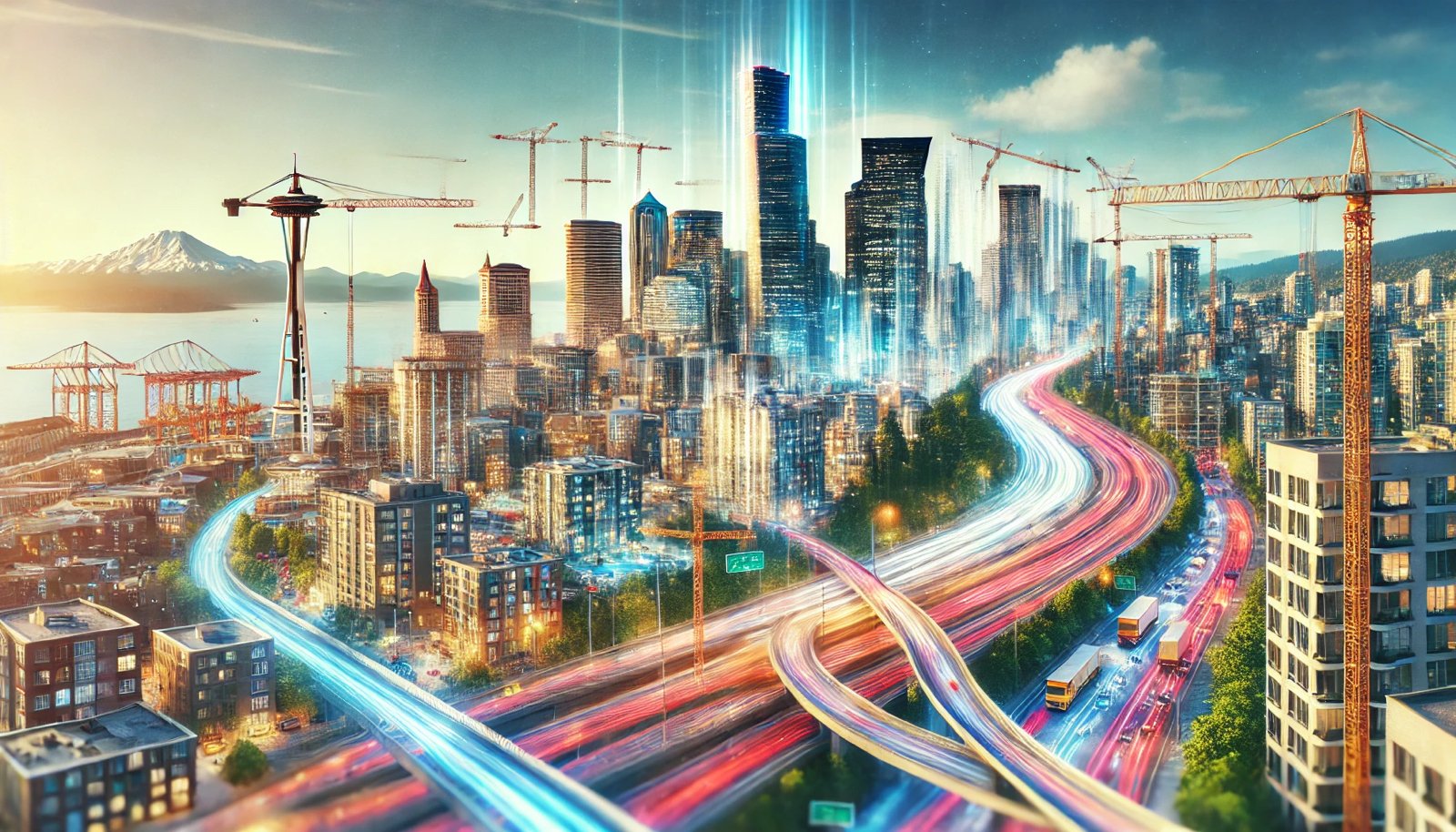Is Seattle the fastest-growing city in America?
New census data gives this question new life: Is Seattle the fastest-growing city in America? Known for breathtaking landscapes and growing industries, Seattle is becoming one of the most dynamic US cities, with populations in constant flux. We investigate the current population trend for Seattle, historical trends, and what is making Seattle a major urban center as a result.
Recent Population Trends
According to the latest data obtained from the U.S. Census Bureau, Seattle has reacquired its title among the fastest-growing cities within the United States. It recorded a population growth increase of 17,750 residents from July 2021 to July 2022, with the growth rate being 2.4%. The remarkable jump placed Seattle atop the list among U.S. large cities, ahead of other metropolitan areas historically known for their rapid growth, such as those in the Sun Belt region.
Of course, this growth comes with its ups and downs. Seattle lost a rather massive 9,000 residents during the 2020-2021 pandemic, but in subsequent years, it saw one of the strongest bounces back. The latest increase also comes at a good time because many other big metropolises are still wrestling with declining populations.
Historical Context
To understand Seattle's present growth trend one must go back in history to appreciate the context of it all. Over the past decade that is, 2010-2020, Seattle has witnessed a pretty impressive 21% population growth, mainly driven by workers that have been attracted to the emerging tech industry. Amazon and Microsoft are some the firms that have reshaped Seattle to become the boom for tech leadership and talent from all parts of the country and indeed the world.
However, despite these success stories, COVID-19 brought the hardest challenges Seattle ever had in growing. At this point, most citizens were trying to find inexpensive living space away from massive metropolitan environments. Over time, people returned to urban lifestyles while working from home, among other things, and hence Seattle population growth lately has been at an all-time high.
Drivers of Growth
Several factors contribute to the reasons why Seattle is getting known as the fastest-growing city:
1. Economic Opportunities: The economy of Seattle is still the leading cause of population growth in the city. Seattle has large tech companies and diversified industries that support the local job market. The continued growth and innovation of businesses open up new jobs to people who move to Seattle.
2. Quality of life: Seattle always takes first or second place with nature on hand, quality amenities of culture, and vibrancy in the community to allow for a rich living life. This provides attraction among new people that settle to live a more balanced life.
3. Affordable Housing: Housing costs greatly surged the last decades. Yet new developments, not to forget zoning revisions for cheaper houses, are slowly materializing. Much needs to change, however; with numerous residents continuing the status quo with high rentals, coupled with fewer rooms and more people to look at housing from.
4. Migration Patterns: Most of the population growth of the state has been net migration in which people moved to the state from other states and foreign countries. That is, this pattern accounts for why Seattle's population is getting bigger.
Community Influence
As Seattle continues to expand, neighborhoods such as Capitol Hill shift through demographics that better fit the changing preferences of its residents. Capitol Hill remains one of the most coveted places for new urbanites seeking a place to experience the city while presenting new challenges related to cost of living.
Local businesses and community organizations are critical in maintaining neighbourhood vitality in this regard. For instance, such services as Seattle Green Maids will contribute positively toward community wellbeing through cleaning sustainability, thus enhancing livability.
Preparing for Future Growth
As Seattle looks into future growth and sustainability issues, proactive measures are going to be required:
1. Urban Planning: City planners must be able to develop comprehensive policies for housing, not just the increasing population but affordability as well.
2. Community Engagement: Engaging residents in community decision-making helps build policies that reflect the community's needs and aspirations.
3. Same Day Cleaning Services: Same day cleaning services help ensure a clean home and community place during transition as people enter new homes.
Conclusion
Having just regained its ranking as the fastest-growing city in the United States at amazing rates of growth, Seattle still today faces problems concerning affordability and infrastructure. To know these trends means planning for future developments to support those currently living there as well as those who are soon to arrive.
This makes it of utmost importance to have cooperation between city authorities and community members in pursuing a successful, thriving community in these times of unprecedented change. Organizations such as Seattle Green Maids, an organization that participates in clean-up initiatives across neighborhoods which contribute to local wellbeing, along with some smart plans for urban designing, could help Seattle stay afloat in these fast-changing tides.
In the final analysis, though housing prices and the business cycle present their respective challenges, Seattle's character as a city that endures and grows will attract people seeking opportunities and community in an ever-changing landscape.
